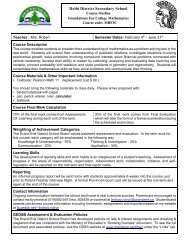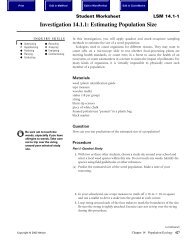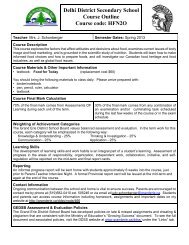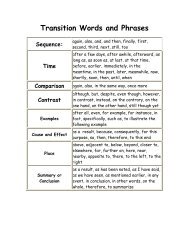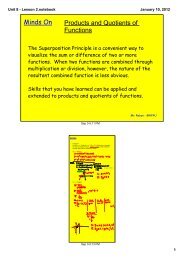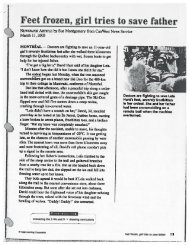Chapter 11.pdf
Chapter 11.pdf
Chapter 11.pdf
- No tags were found...
Create successful ePaper yourself
Turn your PDF publications into a flip-book with our unique Google optimized e-Paper software.
During ReadingDiagrams RequireSpecial Reading TechniquesYou cannot always read diagramsthe way you read words, left toright and top to bottom. Look atthe whole diagram first. Then,read the caption, and look againat the diagram. Let your eye followthe flow of the diagram. Are therearrows? Are there labels? What dothey tell you? After examining thediagram, make notes about whatyou learned from it.The Law of ReflectionSmooth, shiny surfaces like calm water, mirrors, glass, and evenpolished metal allow you to see an image. The smoother the surface is,the better the image will be. An image is a reproduction of an objectproduced by an optical device like a mirror. An optical device is anytechnology that uses light.Light rays bounce off a mirror in a similar way to how a hockeypuck bounces off the boards of an ice rink. To understand how lightbehaves when it reflects off a mirror, it helps to look at the reflection ofa single ray of light in a ray diagram (Figure 11.4).angle ofincidencenormalirangle ofreflectionmirrorFigure 11.4 If the angle of incidence equals 45°, then the angle of reflection is also 45°.WORDS MATTERThe word normal comes from theLatin word norma, meaning acarpenter’s square.The dashed line drawn perpendicular to the mirror at the point ofreflection represents an imaginary line called the normal. Theincoming ray is called the incident ray. The angle between theincident ray and the normal is called the angle of incidence, labelled i.The angle between the reflected ray and the normal is called the angleof reflection, labelled r. The relationship of thesetwo angles is one of the most important propertiesof light, called the law of reflection:When light reflects off a surface, the angle ofincidence is always equal to the angle ofreflection.Figure 11.5 The mirrors in a bicycle tail light reflect headlightbeams back to the driver of the car that sent them.Although the law of reflection may appear verysimple, it is also very useful. For example, the lawof reflection is used to design reflective tail lightsfor bicycles. A tail light is designed to reflect lightfrom the headlights of the car behind it. This helpsto make the bicycle more visible to the driver of thecar. The ray diagram in Figure 11.5 shows how twomirrors arranged at an angle of 90° can use tworeflections to send reflected rays back in the samedirection as the incident rays, no matter where theincident rays come from. In each reflection, theangle of incidence equals the angle of reflection.418 UNIT D Light and Geometric Optics



